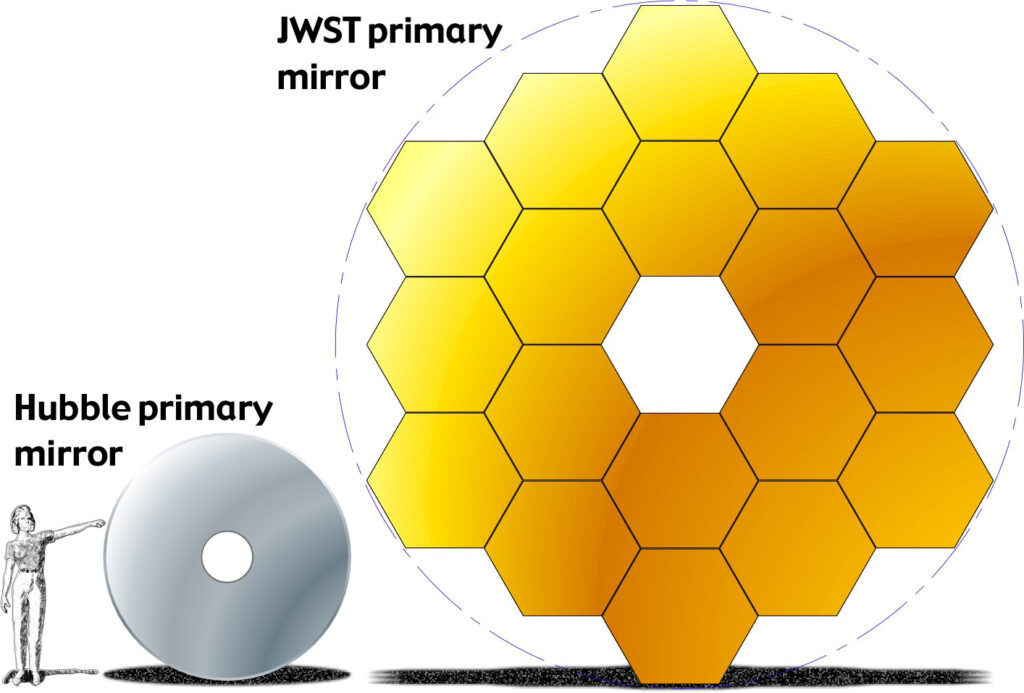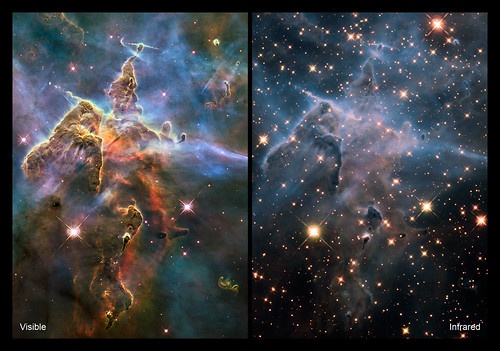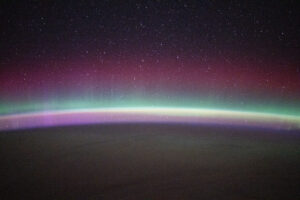The long-awaited James Webb Space Telescope (JWST) is set to change our understanding of the universe. It will be the largest, most complex space telescope ever built, and is 100x more powerful than the Hubble Telescope! And, if you’ve seen the stunning images from Hubble, you’ll understand how improving on that seems almost unfathomable.
As NASA describes, the JWST telescope is an infrared observatory, with longer wavelength coverage and improved sensitivity than its predecessors. To give you an idea of the precision of this instrument, the Webb telescope would be able to observe a penny from 40km away (but I’m glad we’re sticking to looking at space stuff.) This will allow us to look at stars that are hidden to Hubble, due to dust, which absorbs visible light. By looking at infrared light in high resolution (thanks to a large 6.5m mirror – 6x the size of Hubble’s!), we will be able to look back some 13.5 billion years to the “beginning of time!” That means we will be able to see the formation of the first galaxies after the Big Bang, as well as observe stars and planetary systems that forming today.


How cool is that? We will be able to see light that originated some 9 billion years before Earth even began to form! And, it will have to literally be cool. The telescope needs to be kept under −223.2 °C to function properly. To accomplish this, the telescope will be covered in a massive sunshield that will protect it from the harsh temperatures of the Sun. The telescope will also orbit at an L2 point, which keeps the Earth, Moon, and Sun consistently on one side of the telescope, and allows it to avoid the Earth and Moon’s shadow. This will keep the conditions constant for the sunshield and solar arrays.
Cleverly, to launch the 6.5m diameter telescope, it will be folded “like origami” into a 5m diameter rocket faring that will help put it into its 1-million mile high orbit above Earth. Once in orbit, it will take three weeks to unfold and align its mirrors hexagon-by-hexagon before beginning its mission.
The James Webb Space Telescope is set to launch on December 25, 2021, so mark your calendars to give yourself something to look forward to (you probably need it!)



